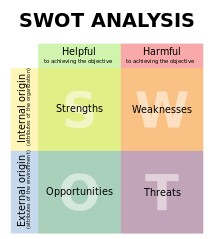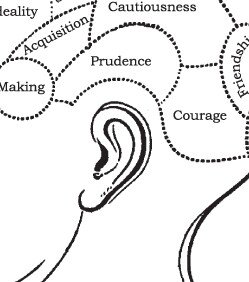As we all know, Pinterest and Instagram have become staples on the social media scene. The right visuals (from photos to quotes to inspirational messages) have great appeal and serve as motivation for many. With that in mind, here are some interesting visuals coupled with some content concerning marketing issues that face marketing teams almost daily as they work towards creating the change in the way people use and interact with their company’s products or services. Short, sweet and fun. Click away! 
The average attention span today is roughly 9 seconds…like that of a goldfish. Nine seconds to communicate a message, earn a little bit of loyalty, build a little bit of trust so you can continue the conversation before your customer starts getting distracted! So what could you possibly say in that time or less to get someone’s attention? It starts with presenting your message in clever and unexpected ways. It grabs people’s attention and has them focusing on the message and not thinking about the other stuff that could come into their mind. They’re engaged and captivated. In doing so, it allows you to persuade them, get them to trust you, get them to believe you, get them to want to connect with you. A shift in perspective from speaking about yourself to speaking from the audience’s point of view can be remarkably effective. Witness a beautiful commercial for a British online content company featuring a blind man whose original cardboard sign talks about himself, “I’m blind. Please help.” But when a caring passer-by changes the words to be more audience-focused, something powerful happens. The symbolism is powerful. To read more, click here.
Social media as a pathway to sales is almost certainly not going to work to the degree you want. There…I said it. While social media can be a valuable marketing tool, it’s not magic and it cannot and won’t replace everything that came before it. There’s no quick success and very few programs break through. Coca-Cola says it can find no correlation between “buzz” on Twitter and actual unit sales. Nissan admits it has no idea if social media helps it shift cars. MasterCard can’t tie its social investment to revenues. Don’t take my word for this. Go online and do your own research and see for yourself. In fact, there remains little evidence social media does anything to boost brands’ bottom lines. So then why use social media at all? The reason is that it is an impactful vehicle for empowering advocacy and we know that’s extremely important for brand health and profitability. Social media, if done right, can capitalize on what brand equity your company has already built up. To read more, click here.
 When was the last time you/your marketing team asked the question “I wonder what would happen if we ________.”Crazy ideas have changed the way we go about living our lives. Knowing this, why is it that many marketers still don’t trust the crazy idea when it shows up unexpectedly especially, since crazy ideas, not safe ideas, are the game changers that propel companies forward? In today’s competitive, me-too world, if your product isn’t a legitimate leader in a category, it’s certainly a far better choice to come up with a new value story around your own product or service rather than trying to compete price-wise on the value that was generated by a competitor. You might want to be thinking about a crazy idea that will create a new meaning around your brand. Embrace that mindset so much so that the next time an idea is presented by your marketing department and someone outside of that department says “That’s a crazy idea,” you’ll say, “Thanks, we love it as well!” To read more, click here.
When was the last time you/your marketing team asked the question “I wonder what would happen if we ________.”Crazy ideas have changed the way we go about living our lives. Knowing this, why is it that many marketers still don’t trust the crazy idea when it shows up unexpectedly especially, since crazy ideas, not safe ideas, are the game changers that propel companies forward? In today’s competitive, me-too world, if your product isn’t a legitimate leader in a category, it’s certainly a far better choice to come up with a new value story around your own product or service rather than trying to compete price-wise on the value that was generated by a competitor. You might want to be thinking about a crazy idea that will create a new meaning around your brand. Embrace that mindset so much so that the next time an idea is presented by your marketing department and someone outside of that department says “That’s a crazy idea,” you’ll say, “Thanks, we love it as well!” To read more, click here.
If you want to have passionate customers and dedicated partners, you must first inspire strong responses. But as you attract fans, you’re also bound to get the critics or “Haters.” It’s OK to have some folks (not too many, though) who will not like your brand. The undeniable reality is that if you’re not eliciting a negative response from someone somewhere, then you’re probably not that fascinating to anyone. Think about it, even Apple has Haters as does Starbucks and it hasn’t hurt them. Alternatively, you have the advocates, evangelists, loyalist…the Lovers. They don’t just buy your product or service, they also accept price increases and forgive occasional “issues.” They’re loyal and not just buying your products for price or utility. In the middle are the Lukewarmers. They have a really bad habit of not caring. They won’t buy your product unless it’s the cheapest or most convenient option which means they’re only buying you until a cheaper or more convenient alternative comes around. In today’s marketplace, this middle ground is death!! Not caring is not buying. Not caring is inaction. The world is not changed by people who sort of care or don’t care at all. Stop focusing on the Lukewarmer. Start by having your marketing and advertising be imaginative, original and fresh. To read more, click here.
Having dealt with all sorts of companies and people, I believe the Number One reason for boring “vanilla” marketing messages is the result of trying to please all the people all the time. Fighting the desire to be all things to all people lets you: 1. Stand out from the herd; 2) Attract the like-minded; and 3) Create stronger connections. Vanilla brands might not have enemies, but they also don’t have passionate advocates whose enthusiasm spreads. In order to win the race, you can’t stand still. Vanilla marketing is standing still. To stand out, to be different, to be memorable, takes boldness. It takes being “a real Marketer”. So, however you go about it, stop defaulting to dishing out plain vanilla marketing and start scooping out interesting flavors (think “Cherry Garcia”; “Chubby Hubby”; or “Chunky Monkey”, etc.) that stand out and are uniquely your own. To read more, click here.
So there you have it. 5 visuals that speak to different marketing challenges and opportunities. Maybe these visuals will stick with you for awhile and even change the way that certain projects, campaigns and programs are developed and executed. Seeing is believing.
####
Rolf Gutknecht is vice president, director of account services for LA ads. To discuss your thoughts with Rolf on this blog or any marketing matters, email via this link, or visit www.LAadsMarketing.com. You can also connect with Rolf on LinkedIn.
 A few months ago, I came across a post on one of my LinkedIn groups that posed a great question. It’s something we don’t think about everyday as marketers, while we should. It really goes to the heart of what marketing is suppose to do for an organization. The question of which I speak was: Would you buy from your company? In short, given what your company is doing and saying to their audiences, if you were prospective customer and you came across your company for a need that they could fulfill at the level of expectation, would you do business with them? This question, or challenge, is one that is directed to anyone who touches marketing, sales or customer service. It’s a self-exam of sorts because it does mean taking a hard and honest look at the organization.
A few months ago, I came across a post on one of my LinkedIn groups that posed a great question. It’s something we don’t think about everyday as marketers, while we should. It really goes to the heart of what marketing is suppose to do for an organization. The question of which I speak was: Would you buy from your company? In short, given what your company is doing and saying to their audiences, if you were prospective customer and you came across your company for a need that they could fulfill at the level of expectation, would you do business with them? This question, or challenge, is one that is directed to anyone who touches marketing, sales or customer service. It’s a self-exam of sorts because it does mean taking a hard and honest look at the organization.
So, imagine if you will, as a potential customer, you’ve landed at the doorstep of your company as a result of a referral. What are you going to find? What is that experience going to be like? How easy is it going to be? Are your customer-facing team members all on the same page when it comes to understanding what needs to be said and done when it comes to furthering the brand?
If you don’t know, you’d better find out—and sooner rather than later.
The customer experience will determine whether or not you attract and retain customers. If you don’t provide your customers with a superior experience when they do business with you, they won’t stay with you for long. So to make that happen, I would offer up that you do a bit of walking in your customers’ shoes to see first-hand what the customer is exposed to. In some respects, it’s learning about the company in the same way that CEO’s do in the show “Undercover Boss.” It’s a real eye-opener for those C-suite professionals to see what their people encounter on the job and how they respond to the challenges of serving their customers.
Go through every step of the buyer process just as the buyer would. Pick your website apart. Is it easy to navigate? Are the questions you want answered done in human speak or in some type of business babble? Ask for a response to a question. How long does it take for someone to respond? How does it compare to competitors…not just in terms of look but in messaging that the customer wants to hear…not messaging that you want to hear yourself say.
From a SEO perspective, does your website use the same jargon or acronyms your potential customers really use? Are you thinking like your customer before creating content because in this hyper-fast world, prospective customers have the attention span of a goldfish and will immediately shut down or leave if they feel like the content doesn’t resonate with them. How does your social media marketing present your company in ways that say to the prospect “This company sounds interesting. I’ll give them a look-see.”
How does your organization as a whole treat your customers…as valued customers or as dollar signs? Want to find out? Call your company from a phone that won’t identify you and see what happens. How long does it take for your call to be answered? Is it answered by a live person, or are you faced with an endless stream of options—push 1 for company hours, push 2 for company address, push 3 for arming the self-destruct system, and on and on and on?
While you’re at it, ask about a particular product. Ask about a service. Say that you are having a problem with a product you purchased and then sit back and see how employees respond. Are they helpful? Do they respond to your questions in a knowledgeable manner? Do they empathize with you? Do they have the authority to solve your problem, quickly and to your satisfaction? An unwillingness to experience and understand what the customer (prospective and current) is having to deal with makes your marketing messaging meaningless because while you might a shot to get the business, if it’s a dismal failure most anything you say from that point out will fall on deaf ears. So is there a disconnect between your marketing message and the reality of dealing with your company?
With this in mind, here are a couple of questions that might be answered as a result of your efforts. First, are your sales, marketing and customer service departments aligned with one another? As these three groups will be what a prospective customer first sees, it’s critical that you understand what the customer wants to see and hear and then work towards making it easy for customers to get what they need..at time of purchase and afterwards. Second, what are the biggest opportunities to improve the experience? In today’s world, a relationship based on trust trumps product and price. Customers don’t want to do business with companies who only care about selling. They’re looking for a trusted solution provider.
Taking a walk in your customers’ shoes will provide you with some insights to make certain that your customers see your company in a way that will prompt them to want to do business with you…which leads to a happy customer. So, when does your “Undercover Marketing Director” journey begin?
####
Rolf Gutknecht is vice president, director of account services for LA ads. To discuss your thoughts with Rolf on this blog or any marketing matters, email via this link, or visit www.LAadsMarketing.com. You can also connect with Rolf on LinkedIn.
 When I first started out in this crazy world of advertising and marketing, I had a co-worker who had been in the business for a while (think of the show “Mad Men”) who would pass on “things to know” in endless supply. One of those things that I’ve remembered over the years has to do with the difference between knowledge and wisdom. It goes like this: knowledge is knowing that a tomato is a fruit; wisdom is knowing that you shouldn’t put it in a fruit salad. I’ve said this so many times to friends, co-workers, my kids, etc., that I’m surprised I’m still not tired of saying it. But there’s so much truth in it and it applies especially to the discipline of marketing.
When I first started out in this crazy world of advertising and marketing, I had a co-worker who had been in the business for a while (think of the show “Mad Men”) who would pass on “things to know” in endless supply. One of those things that I’ve remembered over the years has to do with the difference between knowledge and wisdom. It goes like this: knowledge is knowing that a tomato is a fruit; wisdom is knowing that you shouldn’t put it in a fruit salad. I’ve said this so many times to friends, co-workers, my kids, etc., that I’m surprised I’m still not tired of saying it. But there’s so much truth in it and it applies especially to the discipline of marketing.
As marketing folks, regardless of the industry or size of the firm or marketing department, we’re busy trying to learn as much as we can so as to stay up with the times. And there’s so much to learn. Whether it’s new research telling us about how certain demo groups are behaving towards specific marketing channels, to new online tools, to the best lead-generation software, it’s all coming at us at lightning speed. But we have to remember the need to use good judgment given all of this knowledge. You see knowledge – having specific familiarity or understanding about something – is a bit different than having wisdom – being able to discern or judge what is true, right or lasting. In short, to be wise.
So, while all of this knowledge is important — and it is — we need to know what we can depend on and what is just a fad. What will apply tomorrow after “the next best thing” in marketing has burned out and we’re on to the next “next big thing.” So indulge me in the passing on of some marketing wisdom. Think of it as Marketing “Chicken Soup for Soul,” if you catch my drift.
Marketing wisdom is knowing…
So, when you open up your next Google Alert about a specific marketing subject or if someone from upstairs decides to drop off an industry trade journal with a Post-It note saying “maybe we should try this,” it might be worth remembering “Marketing wisdom is knowing what to put in your fruit salad or keep out of it.”
####
Rolf Gutknecht is vice president, director of account services for LA ads. To discuss your thoughts with Rolf on this blog or any marketing matters, email via this link, or visit www.LAadsMarketing.com. You can also connect with Rolf on LinkedIn.
 As an agency who is always looking to team up with marketing-centric, growth-oriented companies, I’m constantly baffled by the number of prospective clients who tell me that their competitive edge is that “we’re honest,” or “we care about our customers,” or “hey, we’re very good at what we do.” The next obvious question then is how many of their competitors say they are not very honest, they don’t really care about their customers, and they’re not very good at what they do?
As an agency who is always looking to team up with marketing-centric, growth-oriented companies, I’m constantly baffled by the number of prospective clients who tell me that their competitive edge is that “we’re honest,” or “we care about our customers,” or “hey, we’re very good at what we do.” The next obvious question then is how many of their competitors say they are not very honest, they don’t really care about their customers, and they’re not very good at what they do?
We’ve all gotten so wrapped up in what we perceive to be our strengths, what we “know” the market wants, what the reasons are that customers purchase our products and services (or at least should do) that we are in danger of not seeing the forest through the trees. We spend our time thinking up strategies, putting time against newer ways of reaching customers and prospects with the ever-increasing tactics of social media, etc. But we seldom, if ever, take the time to stand back and reflect where the company stands in the real-world, as the marketplace sees us.
As marketers, we know the importance of doing a SWOT analysis – Strengths, Weaknesses, Opportunities, and Threats – usually before companies rebrand themselves or new products are launched. SWOT needs to be a central part of our marketing efforts before the strategy development, before the tactical implementation, before undertaking new methods of communicating and measuring the effectiveness of our communications. In fact, when was the last time your organization or your marketing partner put together a brutally honest, no-holds-barred SWOT analysis? If you’re like most, it’s been a while.
In larger companies, marketing departments have annual planning cycles. In smaller companies, the routines are not as formalized, and planning has a tendency to be less frequent and with less time devoted to it. Generally this process looks more at budget allocation, new initiatives to be considered or implemented, staff/services cut-backs, etc. But hardly ever (ok, with less frequency than one would think) does this planning examine not just the strategy and tactics employed but how marketplace changes may have changed the company’s strengths, opportunities, weaknesses, and threats at the most basic level.
This needs to be done on a regular basis before time and resources (financial, staff, etc.) are committed to a strategy, an approach, or new tactics. Important questions need to be asked, and too often the most basic questions are not asked.
We all know them: What are our strengths? Are the strengths recognized by customers and prospects? Do our competitors have the same strengths? What are their strengths? And so on. How has the marketplace changed? Where are the new opportunities? Are our products/services adversely affected by emerging trends? How are our competitors reacting to the changing marketplace? Etc.
So I am NOT suggesting that the Marketing Department doesn’t know how to approach the marketplace or that we don’t know what we need to know. I am, rather, suggesting two things:
1. We need to set aside some time, on a regular basis, to carefully put all these questions and the answers together, and only then plan, create the strategy and implementation tactics.
2. We need to test our assumptions – every time – against what is happening in the real-world, on the ground, where the customers live and where our revenues come from.
With everything on Marketing’s plate today, and the urgency in which it needs to get done, there’s a real danger of losing sight of the basics. Who has the time, right? Well, if we lose sight of the need to regularly and carefully look at what we think our company is (warts and all), look at all that we do, and all the resources we use/spend, in the ever evolving marketplace – not just our guesses about it and our customers – we risk losing all that we work so hard to achieve: increasing revenues and market share.
The time tested marketing adage of “If you don’t really know where you are, it is much more difficult to get where you want to be” has never been more true.
 A few weeks ago, I was faced with needing to find a new dentist. So, the search began and the more I looked around, the more it showed just how many touchpoints came into play prior to – and after – a selection being made.
A few weeks ago, I was faced with needing to find a new dentist. So, the search began and the more I looked around, the more it showed just how many touchpoints came into play prior to – and after – a selection being made.
As we know, customers experience your brand in numerous ways and each of these touchpoints molds the customer’s impression of your company’s brand. If the brand is a promise you make, then the customer experience is the fulfillment of that promise. The customer experience can’t be left to chance. It has to consistently reinforce the brand promise across every customer touchpoint or the value of the brand itself is at risk.
So, after thinking about what your brand stands for and what sets it apart, it’s time to look outward. After all, if a brand is built and nobody hears it, does it make a sound? In not-so-distant marketing past, reaching consumers meant connecting through just a few channels: a catalog, a radio spot, a store visit, a customer service line, a salesperson…You get the idea. However, the number of channels for reaching customers has exploded in recent years. Think about it: when was the last time you made a major (or even not-so-major) purchase decision, personal or for business, whether a product or service, through a single channel? In fact, it’s more likely that your purchasing decision was made after being reached through a variety of interconnected touchpoints, from social media, to word-of-mouth, to advertising messaging, to conducting research online, to comparison shopping in the store.
Despite the desire to “silo” marketing channels, they’re far more effectively used together than individually. In a Forrester’s research report, it was noted that 33% of new customers involve two or more “trackable touchpoints,” and nearly 50% of repeat customers visit three or more “trackable touchpoints.” And despite the fact that nearly a 50% of the surveyed people believed that social media channels are a great place to discover new products, less than 1% of sales resulted directly from a social media referral. Online search (i.e., Google) and email were much more effective at closing a sale.
That said, your ultimate goal is to have each touchpoint reinforce and fulfill your marketplace promise. The best way to do this effectively is to look at each of your marketing, selling, and servicing processes which then allows you to create a simple touchpoint chart or map that defines your customers’ experiences with your brand.
Keeping this in mind, let’s use the process in looking for a new dentist:
That said, all touchpoints are not created equal. Some will naturally play a larger role in determining your company’s overall customer experience. To determine the touchpoints driving your customers’ overall experience, your organization can use a wide array of techniques ranging from quantitative research to institutional knowledge.
Yes, it’s simple….almost absurdly simple. But stepping into consumers’ shoes is an exercise absolutely too many executives neglect when marketing. We forget to become our own customers–with real, day-to-day concerns–and in the process, we lose sight of the most valuable touchpoint opportunities. Each one is a chance to present your brand and what you stand for.
In other words, having a more refined sense of “touch” has a big impact on how your prospects feel.
 What does this popular country song by Johnny Lee have to do with this blog post? Well, this week my neighbor received a really attractive offer from a company with whom I’ve had a long standing relationship. When I called the company and asked if I could get the same offer, I was told “Sorry. That’s for new customers only.” When I then asked what offers did they have for current customers, I was told they’d get back to me on that. I have yet to hear from them.
What does this popular country song by Johnny Lee have to do with this blog post? Well, this week my neighbor received a really attractive offer from a company with whom I’ve had a long standing relationship. When I called the company and asked if I could get the same offer, I was told “Sorry. That’s for new customers only.” When I then asked what offers did they have for current customers, I was told they’d get back to me on that. I have yet to hear from them.
So, with that in mind, have you noticed how many companies offer deals only to new customers? Sign up for our new program and the first month is free! Special gift for new customers only! Try our new product and we’ll give you more than you asked for! Here’s the problem with those type of offers: They focus on new customers and not the ones you already have. As a loyal customer of that business, it would be nice if you could take advantage of some of those special offers too. Trouble is that they’re for new customers only. You, on the other hand, have been supporting the business for years but you get nothing. Nothing for your dedication and loyalty.
Most people think that growing a company’s sales means getting new customers. Well, yes and no. Yes, new customers are constantly needed, but truly successful companies prosper on their ability to keep the customers they’ve already acquired. The reason is simple. Finding new customers is expensive and time consuming. For example, let the following research statistics wash over you….
Not to mention that current customers give invaluable feedback on “how we did” or “how the product/service is doing” along with being a major source of referrals, etc. That’s why losing a good customer to the competition is always a bad thing. You have to work more than 10 times as hard to get enough new customers just to make up the revenue lost with your departing one, and forget about profit.
Which brings me to the question that begs to be asked: “Why do customers leave?” Curiously, most business owners and managers have the exact wrong idea about why customers leave. Most people believe that customers leave because:
(Drum roll please)…Wrong!
According to an in-depth study by the research firm CRMGuru, the reasons customers give for taking their “business down the road” are:
As you can see, when it comes to keeping your existing customers, customer service is 3 times more important than price–and 5 times more important than functionality. Which obviously means that if you want to keep the customers that you’ve got, you should think about reversing priorities and pay more attention to customer service and quality–and, consequently, less attention to functionality and price. I fully realize that this runs contrary to 90% of what most people think is important, probably because price and functionality can play a large role in new customer acquisition.
So what can be done to maximize the value of your most valuable asset? Here are five quick thought starters:
Regardless of what you’re selling, your long-term profitability is largely dependent upon your ability to keep current customers, rather than acquiring new ones. While it’s fine to try things to attract new customers to your business, be sure to spread a little love around to those who are already in your camp and are supporting your business. Don’t forget, every now and then, to “dance with the one that brung ya.”
 The year is 1913. The automobile is more than a novelty by this time. It is here to stay, and already, in the big cities, cars are beginning to outnumber horses on the major thoroughfares. Every young and growing family of any means has one of these contraptions. And the Ford Motor Company is pumping these babies out as fast as his factory will allow. In fact, if you’re Henry Ford, in 1913, you can’t imagine that ANYONE would want to be without a car, given its obvious speed, convenience and ability to vastly improve commerce.
The year is 1913. The automobile is more than a novelty by this time. It is here to stay, and already, in the big cities, cars are beginning to outnumber horses on the major thoroughfares. Every young and growing family of any means has one of these contraptions. And the Ford Motor Company is pumping these babies out as fast as his factory will allow. In fact, if you’re Henry Ford, in 1913, you can’t imagine that ANYONE would want to be without a car, given its obvious speed, convenience and ability to vastly improve commerce.
But that same year, anyone who is over 50 has grown up with the horse and buggy and they are far from abandoning the most dependable and affordable form of transportation there is. Out in the countryside, they’re even more locked in to the old ways. Of course, they’re all a dying breed – literally – and one day, maybe in another decade or two, Mr. Ford will be right. But in the meantime, it still pays to be a blacksmith.
The year is 2013. Social Media is more than a novelty. And the digital universe will continue to play a growing role in how one makes choices in every area. But there’s a market divide here as well: those under 50 who, growing up, depended on television and now the Internet as their major information sources, and those over 50 who grew up with newspapers, books and encyclopedias, news magazines, radio and eight channels of TV to inform their world view. Those gray-haired Baby Boomers and pre-Boomers aren’t ready to give up the old medium forms or use the full potential of Internet the way their younger counterparts are. They still rely on traditional media and the power of face-to-face relationships to form their opinions. It’s how they’re hard-wired, even though many Boomers and older seniors may have Facebook accounts and smart phones.
For the visionary marketer under the age of 50, little wonder that he or she sees the future the way Henry Ford did in 1913. Soon, EVERYBODY will be wired, interactive, and engaged in the multiplicity of online touch points.
But whoa! If you’re reaching buyers over 50, which is the absolutely dominant market for health care, retirement living, destination travel, hospice care and funeral services, it still pays to know how to shoe horses!
I spoke last week to a senior services industry group, most of whom were Boomers or older, and they were very clear on the fact that for the next decade at least, Boomers and the older generations will remain the primary target audience. In fact, it was fascinating to note how many of these industry professionals struggled to understand how to use Facebook. Well, they’re over 50, just like their buyers!
If you’re under 50, you might chuckle at these old codgers and say their ways are fast coming to a close. But do remember, if you’re selling anything to Baby Boomers and older, these old-school marketers are more on-target than you are.
Young emerging marketing directors need to know how to employ the technological and social changes that are underway. But if you’re marketing to Boomers and older, automotively speaking, this is still 1913, not 1930. The changes that should be happening right now aren’t so much about how to use Facebook and Twitter but how to speak to the Baby Boomer better, understand their culture better, speak their language better and show up where they are. That means more relevant branding, more choices of products and services, adroit use of surprise, humor and respectful irreverence in marketing, and the avoidance of anything that reeks of clichés and stock or traditional messages.
Visionary thinking is wonderful, but while you’re looking well down the path, it pays to watch where your very next step will be as well.
 “Did you hear what I just said?” my wife asked me as I was busy doing the chores this past weekend. Fessing up, I admitted that I heard her but wasn’t really listening. I think it had something to do with the dripping bathroom faucet.
“Did you hear what I just said?” my wife asked me as I was busy doing the chores this past weekend. Fessing up, I admitted that I heard her but wasn’t really listening. I think it had something to do with the dripping bathroom faucet.
There really is a difference between “listening” and “hearing” as my wife occasionally reminds me. Hearing is passive and requires no effort, while listening, on the other hand, requires focus, attention and concentration. So with that as the backdrop, as a marketer, “Are you merely “hearing” your customers or are you “listening” to them?
In today’s world, we’re all stretched for time and the need to get done everything that needs to be done. But too many marketers are becoming so technology-addicted to their iPhones and email that they forget to listen the old-fashioned way to what their customers are saying and learning what it is that they want. They’re hardly even asking them. Attention spans have compressed to seconds, and face-to-face conversations (where body language plays a big part) are avoided in favor of texting and anonymous Internet surveys. It shouldn’t surprise you then that a Harris survey found that about 25% of all Internet users think it’s okay to be “plugged in” during their honeymoon, and just under 10% think it’s alright to surf the web during religious services. Do you really think that any of these people are taking the time to listen to their customers? Hardly.
So how do you know what your customers want? One of the most common answers I hear is, “Because they told us….” Yet, for me anyway, this answer only calls for more questions. Who? When? What did they tell you? How did they tell you – online? in person? Are you sure you really understood what they were telling you? Have their wants changed?
Think about this: if understanding what your customers want is the foundation of your marketing strategy, listening to customers is going to require more than a one-time investment in classic market research tools like focus groups and customer surveys. (Can I get an Amen on that?)
It’s no big secret that the markets in which you compete are evolving. Customer preferences and wants are continually changing. New competitors are showing up. But the one constant is your customers are talking. The key to truly understanding what they want is continual engagement – through social media, one-on-one interactions, and even sales calls. Getting in front of your customers and engaging them in conversations should be a required part of every marketer’s job – from the CMO down to the marketing specialist. And this applies to both B2B and B2C companies.
Ever wonder what causes customers to flock to one brand while remaining coldly indifferent to another—even when the offerings of the companies in question aren’t substantially different? Well, my experience working with varied sized organizations in all sorts of industries says that the single most important factor that separates the good companies from the great companies is the ability to listen to their customers. Great companies are maniacal about listening and differentiate meaning from the information given. In other words, they’re doing more than hearing what their customers are saying. They’re spending quality time listening. And they’re deriving their direction from what their customers are saying.
On that note, with social media being what it is, here are a couple of things to consider to help bring home the point of how important listening really is: Almost 50% of consumers want businesses to listen to them to improve their products while 60% of consumers want businesses to respond to their complaints. And, 66% of consumers across age groups want companies to respond to online comments on social media platforms.
Here are 5 quick tips on listening to your customers, and please, share this with your staff:
Now that all said, it’s also important to understand that not all customer comments are of equal importance and listening to them without some discrimination can be dangerous. Sure, they provide valuable feedback, advice and criticism, but the stuff some customers tell you can be distracting, unfocused, self-serving and a waste of time. You can’t please everyone and you can’t meet the needs of all your customers. This is when “hearing” them is a better course of action.
At the end of the day, if you don’t care, or can’t convince your customers that you listen, you can bet they will find a competitor who does. Successful businesses walk the walk and listen to the talk,
by Rolf Gutknecht, Agent of Change (c) 2012
I’m not sure about you, but in the deluge of emails that comes my way each and every day, it’s real easy start deleting them without even thinking about whether there’s content that might make my life and that of my clients easier and better. So, I stopped doing that about  6 months ago and now take the time to open each one and at the very least scan for interesting info. Maybe I’ll see something about trends, or research data, facts, or a tidbit about helpful hints. Without doing so, I’d miss out on stuff I should know about and, respectfully said, that’s probably the case with you as well.
6 months ago and now take the time to open each one and at the very least scan for interesting info. Maybe I’ll see something about trends, or research data, facts, or a tidbit about helpful hints. Without doing so, I’d miss out on stuff I should know about and, respectfully said, that’s probably the case with you as well.
Well, with your indulgence, I wanted to share with you 10 pieces of information that you may not be aware of which in turn will help you grow your business by seizing on untapped revenue-producing opportunities. So, here goes:
As I said, it’s easy to delete a bunch of good information that comes your way because of time constraints, being short staffed or being overwhelmed with email after email. But this is all good information that I received and looked over before I hit the delete key. If you’ve read this far, you’ve made the same thoughtful decision as well.
At my daughter’s college volleyball game this past weekend, I struck up a conversation with a guy who let it be known that he was the Director of Marketing for a company that owned a few hospitals. Knowing something about hospital marketing, I asked him about his competitor’s marketing activities and he then told me he thought one competitor was doing this and that another was doing something else…he thought. I asked him how sure he was about those things and he said “Honestly, that’s why I said ‘I think that’s what they’re doing’ because I really don’t know for sure.”
 With more work to do with less people, budgets and services, along with not putting in place research that would tell them differently, it’s easy to see why lots of companies don’t really know how their competitors are marketing themselves and their products. One thing we all know for sure is that times have changed and, as a result, it’s more critical than ever to have competitive intelligence for the benefit of the company’s future…as well as not having your boss say “What do you think about the new ad for ABC Widget?” and you haven’t a clue. It’s just not a good place to be…I know.
With more work to do with less people, budgets and services, along with not putting in place research that would tell them differently, it’s easy to see why lots of companies don’t really know how their competitors are marketing themselves and their products. One thing we all know for sure is that times have changed and, as a result, it’s more critical than ever to have competitive intelligence for the benefit of the company’s future…as well as not having your boss say “What do you think about the new ad for ABC Widget?” and you haven’t a clue. It’s just not a good place to be…I know.
So what can a budget-challenged marketing professional do to track the competition without taxing already limited resources?
Let’s start with a few basics: Know who all your competitors are–not just the obvious ones, but the ones flying under the radar as well. Simply put, competitors can be direct (those offering nearly identical goods or services as you do) or indirect (those offering different types of products that answer the same needs). Staples and Office Depot are direct competitors; Sam’s Club is an indirect competitor.
From that point on, it’s about keeping your ears and eyes open. Again, while it seems oh so obvious, when was the last time you looked at a trade magazine or business journal or dug around online to see who’s saying what to your customer or prospective customer? What did the competitor’s ad say; the trade show booth look like; how did their packaging show on the shelves; or what did their last promotion look like? And let’s not forget about all their online initiatives.
On that note, here are some things I do to get intelligence on “the other guys”. An easy place to start is with Google Alerts. Plug in the name of the competitor or associated products and let Google send you daily messages whenever related content appears online.
Then there are the websites. Ask yourself when the last time you visited a competitor’s website and what did you see? For example did you notice things like the kind of content and the different formats used; any social media networks they are part of; what media coverage they received and the different topics they issued in their press releases?. What about looking at their content, which will give you an idea of what they’re trying to rank for. And here’s one for you: how many different websites do your competitors have? It’s quite possible that maybe some of your competitors have more than one website. Time to look for them.
You can also check out the social media profiles of your competitors on Facebook, LinkedIn, Twitter, etc. or use a social media search engine such as SocialMention.com to see the kind of content they post and who they follow and who follows them. It can also reveal what others are saying about your competition, good and bad. And then there are corporate blogs. Studying the blogs by your competitors, if they have any, can help you know what kind of topics and categories they cover because it will help you ensure that your blog follows a different and better messaging strategy.
For those that are saying “yeah, yeah, yeah, what else?”, well, a backlink analysis of your competitors’ sites will give you a basic idea of where they are getting their links from. For this you can use sites like Open Site Explorer. They show up to 1,000 backlinks for free and even more if you use their paid version. Backlink analysis often brings up sites where your competitors might be advertising and those links give you information on some of these popular sites (they did some research – gain from their knowledge).
Did you know about a little known tool from Google called Double Click Ad Planner? It’s for finding out detailed demographic information about your competitors’ customers. As well as giving you reliable figures on how many visitors your competitors’ websites get, you can also find out the age of their customers, income, gender, education level and more. And while we’re on the subject of Google, if Google’s the one ranking your business against your peers, then it makes sense to understand who Google thinks you’re similar to, right? Here’s food for thought: type in your own URL in the searchbar and see what comes up. You may be surprised.
So, am I trying to intimidate you by showing you just how much competition there is out there today? Nope. But it’s important that you’re aware of it so that as you monitor competitors’ actions, you’re looking at the right sites and in the right direction. Because times have changed and your competitors are no longer just the names you’ve always known. Your competition is anyone who gets themselves in front of YOUR customer’s line of sight. Frances Bacon’s quote “Knowledge is King” couldn’t be more right on.